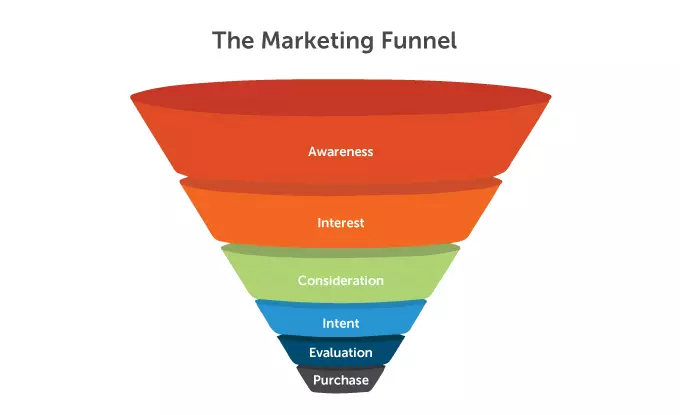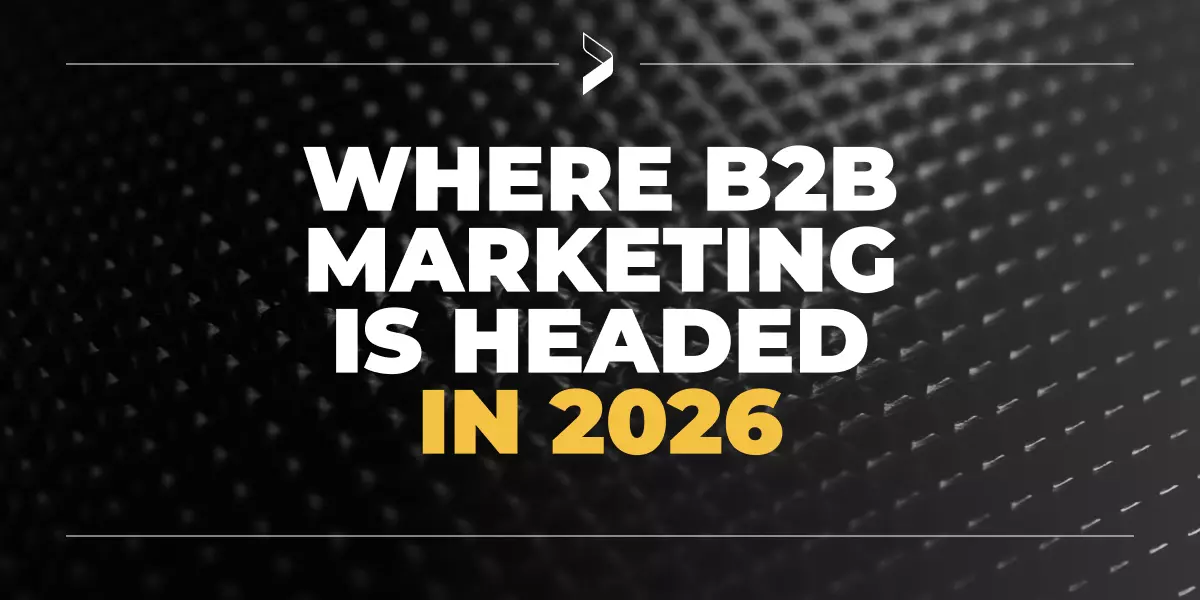5 Key Elements Manufacturers Need For a Successful B2B Thought Leadership Program

B2B thought leadership that promotes your world-changing technologies in a strategic, agile, integrated and optimizable way — with communication techniques as advanced as the topic.
If you’re like most B2B industrial companies, your company has some crazy geniuses locked away in a back room in R&D or Product Development. Mad scientists who are inventing cutting-edge technology that will revolutionize your industry and maybe even change the world.
Their work establishes your company’s thought leadership and the intellectual firepower that will create new products and services. That, hopefully, will redefine the status quo in your industry and will ideally fuel your company’s growth for years, if not decades. You gotta love ‘em.
In what is perhaps the signature challenge of B2B marketing, your role is to promote this thinking to your audiences in a way that illustrates the promise it offers. To show people you have the crown jewels of your core technology and, over time, convince them that your company is the go-to resource to address the challenge.

For years, B2B companies have all too often accepted the Emerson dictum and not done as much as they could to promote this all-important expertise, assuming everything would work out somehow. Maybe they posted a white paper on the web or publicized a presentation at a show. But little else. It’s classic engineering modesty.
In all fairness to marketers, high-tech thought leadership is challenging. The topics are often arcane and difficult to understand — your subject matter experts (SMEs), even more so. Their ideas often go outside the boundaries of existing technology. And you don’t want to reveal so much that competitors could beat you to the punch./p>
But the rewards are well worth the effort. Think of the value of having your audience accept your position as the market leader in some breakthrough concept or technology — in effect, allowing you to own (and brand) the topic in the way Apple once owned innovation or Toyota owned manufacturing quality. The benefits could be staggering.
That’s why your company’s critical thought leadership topics deserve their own campaigns that are well-planned and thought out, reaching everyone in your target market. They should be integrated and smart, with each element complementing the entire campaign and should be agile, to fully capitalize on any emerging opportunities, and executed to deliver results and allow constant optimization.
Successful thought leadership campaigns have five key elements and are centered around a core idea that will immediately attract the attention of your audience, built with communication techniques as advanced as the topic.
Let’s review those elements individually.
Strategic
According to a recent study by TREW Marketing, nearly 40% of B2B marketers said they have difficulty knowing what topics will drive traffic and leads. That’s an easy one.
The answer lies in making sure you have a marketing strategy in place with clear positioning, audience personas and an overall messaging platform. These elements will help guide the messaging for your thought leadership campaign. You’ll want to be able to cite the stats that say, for example, that 70% of your audience is worried about energy consumption or the environment. Then show how your potential thought leadership topic addresses those hot-button issues. It’s really that simple.
In addition, any thought leadership topic you are considering should support your corporate positioning. For instance, if you’re a technology leader in your industry, you wouldn’t want to launch a campaign around something that pushes a low-price, lower-quality alternative to your main technology.
And while you’re thinking of strategy, you’ll want to outline the goals for your campaign. What do you hope to accomplish? The more concrete those goals , the better. For example, your goal could be: “We hope to generate leads for our company.” A better alternative would be: “We expect to send 20 marketing-qualified leads (MQLs) for sales follow-up.”
Agile
Thought leadership campaigns usually address topics on the cutting edge of technology. A new development with important benefits will generate significant interest in your audience. That may open up opportunities to place articles in technical journals or make presentations at major shows or seminars. But those advances usually require quick responses. You need to be ready.
In addition, if you are the first to develop an idea or technical advance, you have the proverbial first-mover advantage. But that puts a number of burdens on marketers, such as:
- Small window of opportunity. There may be relatively little time before competitors make the discoveries your people have made or find ways to copy them. As a result, the faster you can promote a new advance, the better.
- Impact on corporate profit. Technology leaders can reap most of the benefits of their new product developments in the time before competitors can respond. So, any delay could have a negative impact on the profit your company realizes long-term.
As a result, thought leadership requires great agility and quick responses from marketers.
Integrated
The key to developing thought leadership campaigns is great up-front planning. You want all the elements to align within messaging. And, where possible, the same look and feel, regardless of the media or the channel.
That’s not just a question of corporate vanity but impact. Over the years, industry commentators have quoted studies showing that a person has to see an ad or promo at least three times, and possibly seven times, before it registers in their minds. And while those numbers need to be viewed with skepticism (see a dissenting view here), few people doubt the importance of consistency and frequency in breaking through the clutter. Having the same look and feel simply makes the effort more effective.
But more importantly, the elements need to work together to advance the prospect through the marketing-to-sales funnel. More than 40% of B2B marketers say they have trouble measuring the impact of content through the funnel, according to the study by TREW Marketing mentioned above. Integration addresses that issue directly, with each communication having a specific mission or role in the plan, each piece supporting overall campaign goals and each tactic containing a call to action as a clear path to the next step.
For example, a display or search ad might drive a reader to a landing page by promoting a video the person can view there. And, on the web page, there is a prominent link to the desired end goal or conversion. In effect, you’re drawing the funnel (see Alison Fetterman’s recent post on the “death” of the funnel).

Can you do it all on social media? Maybe, but probably not. It’s true that few things are faster than Twitter, reach more people than Facebook or target better than LinkedIn. But few tactics build credibility like a trade journal article or are as important to engineers as product data sheets, e-books and white papers. Few channels are as accepted as email. And a case history that is printed in a pub, videotaped for YouTube and promoted endlessly in every other medium imaginable? Priceless.
That’s why a successful thought leadership program has a mixture of elements that are selected because they meet the unique needs of a particular subject or audience and work together as part of an integrated campaign to move the prospect through the funnel to deliver results.
Optimizable
A decade ago, marketing was in the worst possible position. We spent months developing campaigns but had great difficulty measuring the reaction in the market. Yet those materials lived in print for years or even decades. The fear of failure was very high. And marketers tended to resist measurement and review of their efforts as a result. Best not to know if our programs worked or not, but we’ve moved past that.
With digital media, change can happen in minutes. A campaign that’s not working can be swapped out in a flash. Headlines, key selling ideas, visuals, calls to action and copy can all be tested and refined constantly. And they should be.
We have to realize that failure is part of the process of learning and growth. And it’s better to fail faster and course-correct than to let our fear of failure prevent us from using these marvelous tools to their fullest.
ROI-Driven
Thought leadership without sharing or marketing your great ideas is a little like the proverbial tree falling in the forest. What good is it if no one hears you? If the market doesn’t know about your advance and doesn’t give you credit for it, you’re simply not going to benefit. After all, Apple didn’t really invent the mouse you use on your computer, but it got most of the credit (and profit) for doing so. That’s the message B2B marketers need to deliver both to their potential subject matter experts (SMEs) and to top management.
Marketing these great ideas by occupying an important position in the technological (as well as the competitive) landscape, is one of the key benefits of thought leadership. It’s part of the reward your company gets for funding the research or building the expertise in the first place and is the key to achieving the long-term market position and profit that comes from doing advanced research.
To reap those rewards, however, you’ll want to encourage both your SMEs and the C-level to begin thinking of marketing as an integral part of the thought leadership process. You can build in a thought leadership communications plan – and a budget – as part of the approval of a research or new product development initiative. In manufacturing terms, you want them to see thought leadership campaign development as another input, an important one, in the production process.
To succeed in that, you need to be much more rigorous in your approach. Estimate costs accurately. That’s the investment. You’ll need to develop programs with efficiency and agility and have a good handle on the results you expect to achieve. That’s the return – the return on investment.
Top management is demanding some level of accountability anyway. Thought leadership is a great place to start delivering ROI, partly because leadership wants to know how their money is being spent. But mostly because we want to know so we can get better at our craft and do the best possible job for our companies — and for those lovable geniuses who are changing the world.
Sign Up for our Newsletter - Get agency updates, industry trends and valuable resources delivered directly to you.
Godfrey Team
Godfrey helps complex B2B industries tell their stories in ways that delight their customers.




